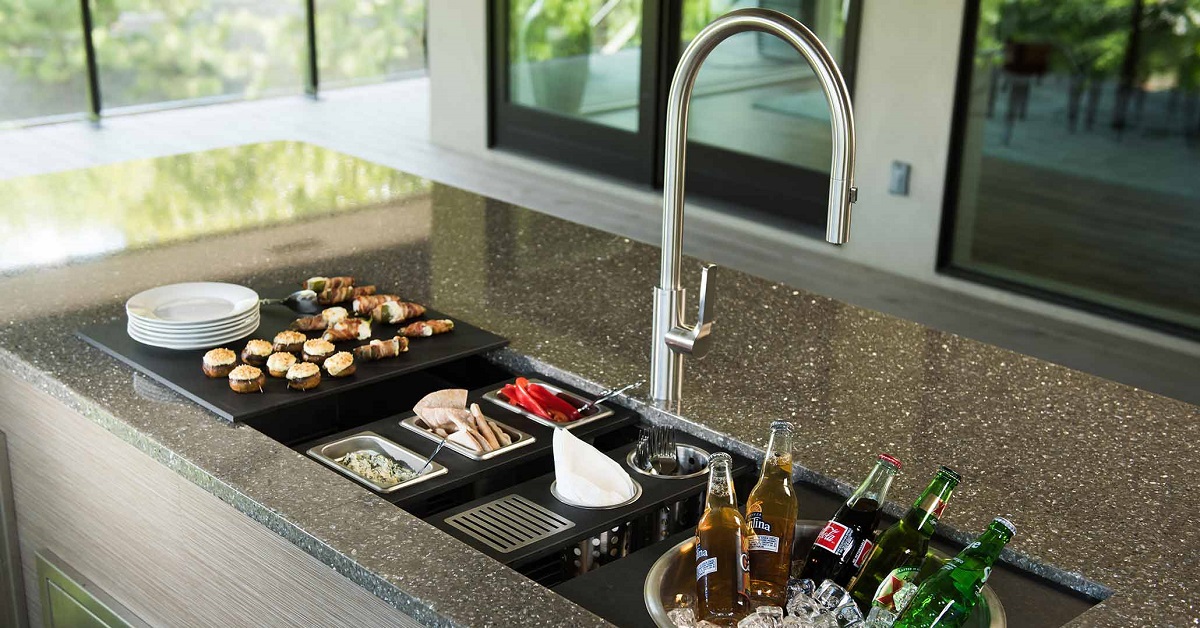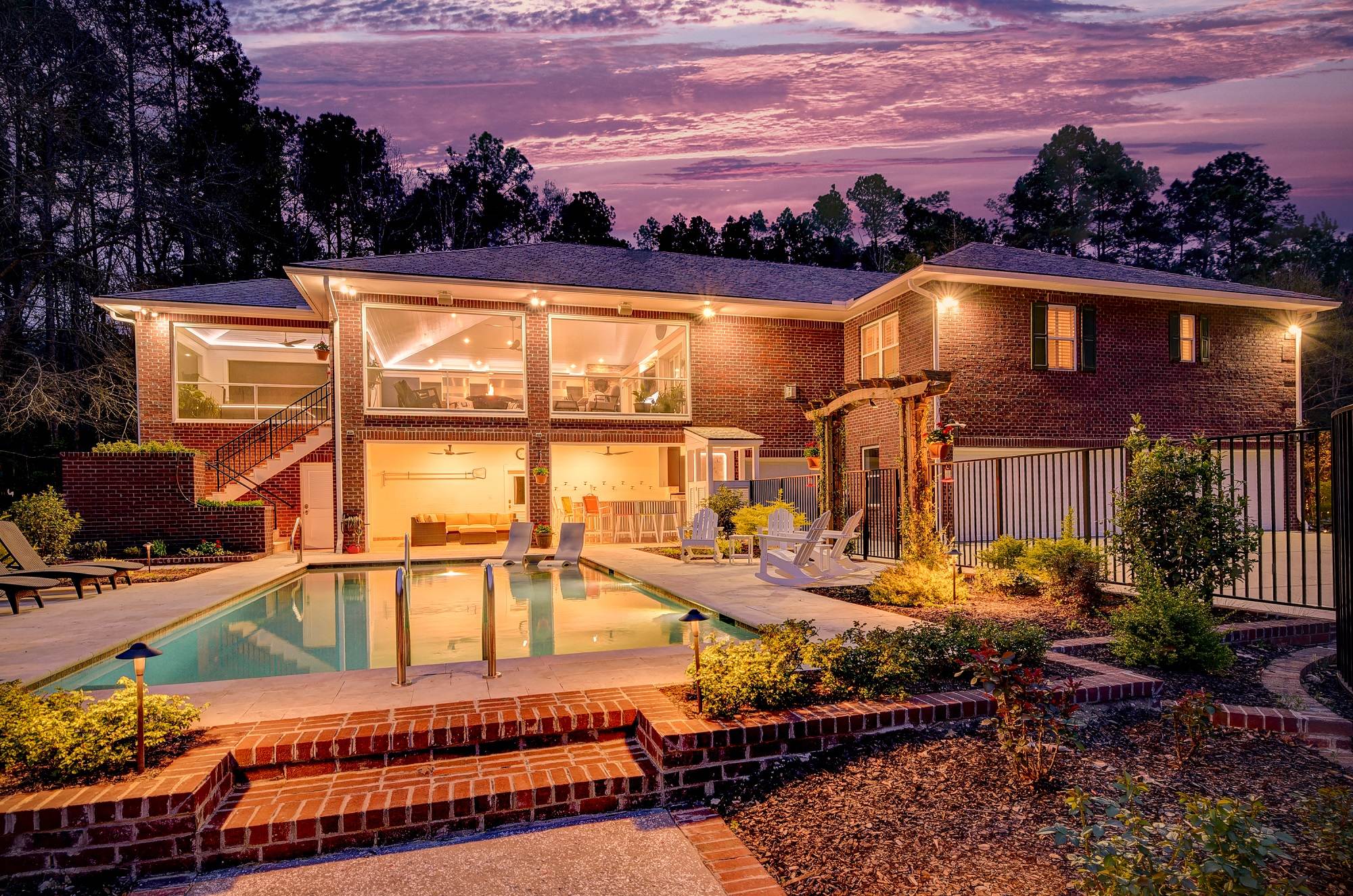Farmhouse Sinks
To explain the farmhouse sink, we need to first explore the history. This allows us to see how it evolved over time. There are basically 4 types of farmhouse sinks with the ladder being the ones used today.
- Belfast sink: Originating in its namesake city of Belfast, Ireland, the sink was designed to hold copious amounts of water. This original design was deep and had an overflow in case the water level was too high.
- London apron sink: Also, with origins in London, England, this sink was similar but did not yet have the luxury of an overflow and as water was not as easy to get, the sink was not as deep.
- French farmhouse sink: Prior to the 20th century France had become known for its high-grade porcelain. The French Farm style sinks were now becoming popular here for their utilitarian value and style. The French we considered fashionable in more than just sinks and even the United States started looking at the farm sinks at this time. Our country was producing them in Cast Iron.
- Modern farmhouse sink: The Farm sinks today are available in myriad sizes, styles and materials. From small single bowls to large double bowls or double bowls with low dividers in the middle, there is a size and style for you. They are available in Stainless Steel, copper, bronze or stainless steel that is plated with a rare metal. The plated sinks appear to scratch easier so not popular in our studio. The apron fronts can have fleur-de-lies or other decorative patterns stamped into the apron. Other materials include cast iron, porcelain, fire clay and man-made versions including Soapstone and Quartzite which is a quartz ground up with a bonding agent to form the shape and size. These are available in a wide range of colors and have become very popular with replacing the sinks of yesteryear. One of the reasons is their durability and low maintenance. The better grades of these products do not scratch and you just dry after use, so they also do not spot. Their thickness and durability also mean they are quiet and do not make the echo sounds like the old stainless products. Sinks must be functional; large enough to hold plenty of dishes, maintenance free and this design allows the user to get closer to the sink because of the apron front being outside the front of the cabinetry thus enhancing comfort. Further it protects your cabinetry from water spills. Farmhouse sinks are used in other rooms as well and very functional. The kitchen sink is a foundational part of your kitchen design so choosing the right sink is very important. This can also be the focal point in your kitchen.
Top Mount Sinks
Top mount sinks are still used today primarily because of cost. You simply cut a hole in your top and drop the sink in. It has a rim around it that sits on top of the counter. Add a bead of caulk under the rim and you are done. The cutout does not have to be pretty because the rim of the sink covers the imperfections. The caulk joint making cleaning an effort as caulk tends to get dirty. These sinks are also referred to as drop-in sinks. They are available in Stainless Steel, Fiberglass, cast iron, porcelain and various other materials. These are also available in multiple shapes and sizes in single bowl, double bowl and triple bowl units with varying bowl configurations. Enough said about this type as it is rarely used today.
Undermount Sinks
Undermount sinks are similar in most respects to the top mount sinks except that they mount under the tops. This eliminates that joint on top where dirt and grease builds up. There is a joint, but it is below the surface and this is caulked so special care needs to be taken to wipe this joint off when you dry your sink to eliminate any mold, dirt or grease buildup. An undermount sink is installed directly under the counter, creating a seamless look from countertop to sink. This versatile sink is available in multiple configurations, styles, sizes and materials.
Galley Workstation
It was about 2004 that my dear friend Roger Shollmier came up with an inventive idea for this new style of sink. I always said that a good kitchen designer needed to also be a cook. After all, how can you design kitchens if you do not know the value of “How things are used in the kitchen?” Roger was a cook that kept thinking “there must be a better way”. After years of trying new ideas he developed the Galley Workstation concept. Consider this as the most important element or hub of the kitchen. It is the place where you prep using the cutting boards and letting the waste fall directly into the basin. Its novel use of Stainless-Steel colanders that fit into the platforms designed specifically for the workstation allow your pots of pasta water to be poured directly here, while the bowls are storage compartments during the prep stage.
Pans or cookie sheets also go directly from the oven to the workstation with its incredible design utilizing layers of storage. This also is perfect for serving with all the specialty platforms, bowls and serving pans that nest within. It offers a multitude of accessories to aid in food preparation, cooking and serving. Finally, they are all 16-gauge Stainless Steel with welded and polished corners and have a proprietary bottom that drains well. They are available in sizes ranging from an 18” wide bar sinks to 2’, 3’, 4’, 5’, 6’ and a 7’ standard workstation size and everything in between.
Further you can customize it with dry docks on one or both sides, drain locations, partitions for double bowls and even corner workstations. One great application is to use a 5’, 6’, or 7’ as your main workstation in an island so you can prepare while speaking with your guest and another 3’ workstation as your clean up center. Please look for the videos of the amazing product on our website www.WinslowDesignStudio.com/services/electrical-plumbing-appliances/#iLightbox[image_carousel_2]/5 to see how it has ultimately changed the way we design kitchens.
Sink Materials
- Stainless steel: Many of us associate stainless steel as they sink we grew up with. These were typically thin or 18-gauge double bowl units that made a ping every time we hit it with a fork or spoon when washing dishes. Stainless Steel has gotten better with more options. They now are available in 16 gauge which is thicker and recommended. They also have a multitude of configurations including double bowl, single bowl, offset double bowl or single with a low divider. Also, they can be better insulated with pads for sound dampening and spray on insulation to make it less noisy. They are also available in a farm sink configuration with front apron. The less expensive sinks are stamped from a single piece of metal, but the better sinks have welded corners, are 16 gauge and can even have very small radiused corners. The styles range from traditional to the sleeker modern varieties with zero radius corners.
- Cast iron: As sinks have evolved so have the materials associated with them. The cast iron typically has a porcelain coating that can chip if hit. These materials are prone to chipping. They are available in single and double bowls and lower partitions between the bowls are also available. These have fewer color and size options. These are most always undermount and still available in a top mount version that would have the caulk joint. They are heavy and may require additional support methods in the sink base. You should not use abrasive cleaners as they can damage the thin porcelain coating.
- Composite: The composite sinks we refer to as Silgranite offer a good variety of colors, shapes and sizes including farm sinks. They blend in well with the Quartz top colors and the seam is fabricated, thus no opportunity for dirt and grease buildup. They are easy to clean and take care of and are quiet. These are great for
- Porcelain: Porcelain sinks have been around a long time and they remain popular because they are non-porous, easy to clean and durable. Even though it is durable they can still chip. Kitchen sinks are more prone to chipping while washing large pots and pans. The good news is that the porcelain can typically be repaired. Another benefit of porcelain is they are available in several colors, sizes, styles just like the other types mentioned previously. They can be susceptible to stains and should be cared for by wiping out any sink after pouring items such as coffee, tea or wine in the sink. Other than that, they should have a long life in your kitchen.
- Fireclay: Fireclay sinks are made from a combination of clay and glaze fused together at very high temperatures, upwards of 1600 degrees Fahrenheit. Fireclay sinks are like cast iron sinks but tend to be slightly more durable. They will not chip, etch or stain and you can use abrasive cleaners unlike on a cast iron sink. Fireclay sinks are usually more expensive than cast iron due to the fabrication process.
Kitchens are rooms where memories are made, and great recipes are tried and tested. They are spaces where one entertains friends and family. It can be the focal point of a kitchen and the first item one notices upon entering. Make you sink or Galley Workstation something that will be remembered as well.










